The art collection of Riccardo Gualino, a sophisticated entrepreneur from the Piedmont region, was without doubt one of the most important Italian collections of the early 1900s. Gualino was bankrupted during the Great Depression and had to make over his collection to the Bank of Italy, with which he had contracted a substantial loan. Although the Bank was forced to sell a number of works, it was fortunately able to keep a large selection, which formed the basis for the prestigious collection now housed in Palazzo Koch, the Bank’s impressive head office.
The Gualino Collection, originally conceived along the lines of the great American collections and thus embracing the full panorama of history and geography, from antiquity to the Baroque, underwent a substantial transformation after Gualino met the art historian Lionello Venturi in 1918. “He completely changed my view of art,” wrote Gualino, “making it part of my life.” Soon, seven paintings by Modigliani were added to the collection, together with major works by Casorati and the Gruppo dei sei, six painters considered at the time to represent Turin’s new avant-garde, as well as Fattori’s famous Ritratto della cugina Argia, works by Cézanne and, lastly, paintings by the Impressionists, including the famous study for the Negro servant in Manet’s Olympia. Although only a sketch, the latter’s inclusion illustrates Gualino’s enlightened attitude and his response to the scandal that the naked woman had provoked in Paris in the 1880s, later becoming an emblem of the Turin avant-garde movement and a symbol of revolt against bourgeois prudery.
The works that escaped sale, including a landscape by Monet, paintings by Spadini, Soffici and Carena and some works by the Gruppo dei sei, remain evidence of Venturi’s influence and Gualino’s earnest and generous support of his choices. The partnership between the two men developed beyond a simple advisory relationship, soon becoming a bond that led them to manage together some undertakings of major importance for the city, including projects for the theatre. They were further united by very similar political sympathies. Both were liberals and belonged to the same group of anti-Fascist intellectuals surrounding Piero Gobetti, which included the architect Alberto Sartoris, the critics Edoardo Persico and Giacomo Debenedetti, and the writer Mario Soldati, all of whom were engaged in contrasting the regime’s closed attitude by advocating the dissemination of culture and an international approach to contemporary art.
La collezione Gualino
The Gualino Collection
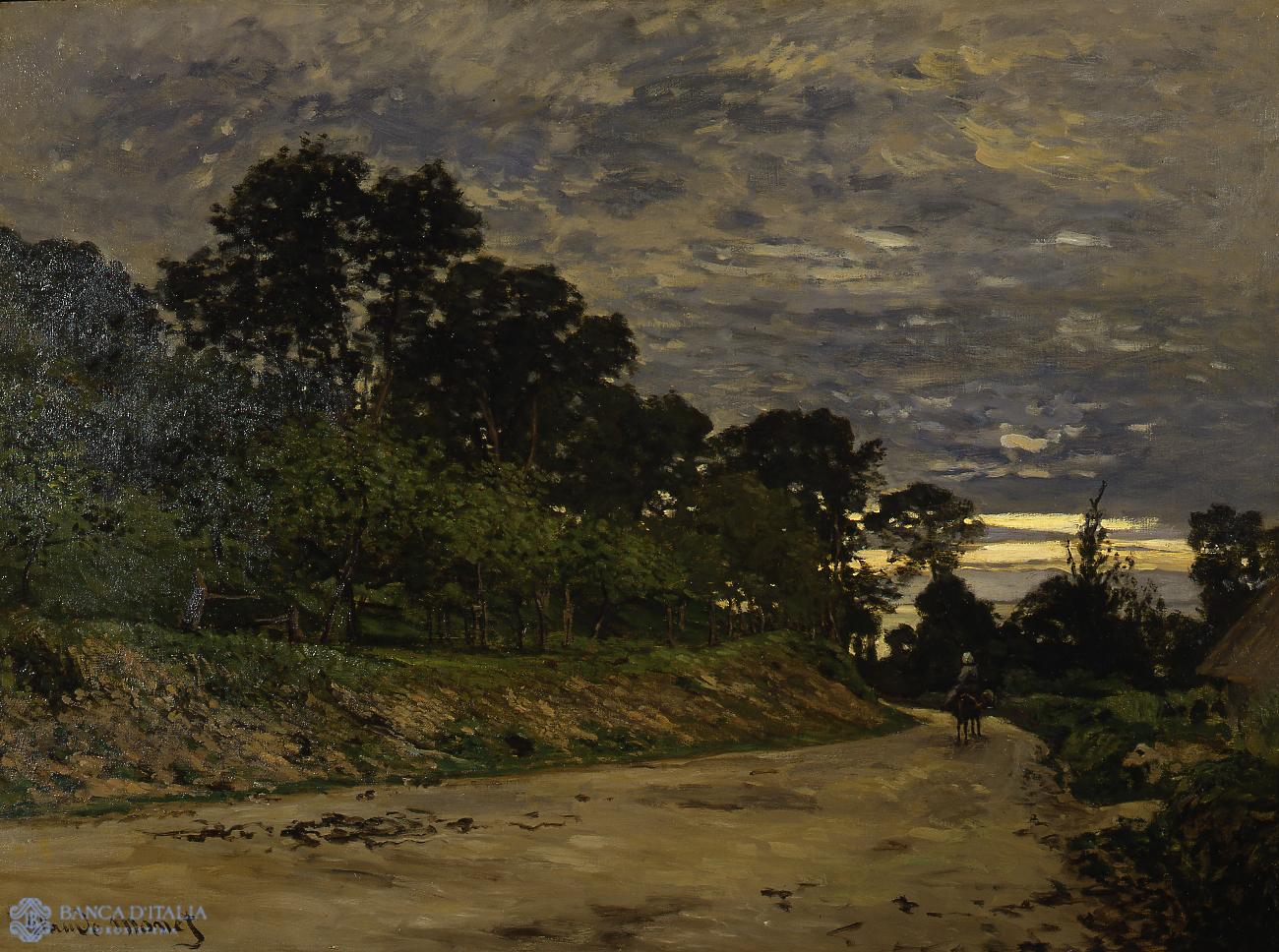
Works of art

La quiete
At the 1922 Venice Biennale Gualino was captivated by a large painting, La quiete (‘Tranquillity’) by the Turinese painter, Felice Carena, which was not for sale. Driven by admiration for what is probably the artist’s masterpiece, Gualino asked him to paint a second version for his collection, the one now on display in Palazzo Koch.
Painting
20th century AD
Figurative

Piccoli pescatori o Tobiolo
Armando Spadini is considered to be the artist closest to French Impressionism, but his work nonetheless reflects the mental adjustment that stemmed his sensuality and emotional exuberance. His later works, such as the present one, reveal how he listened to ‘the voice of things’ in order to capture their resonant fullness.
Painting
20th century AD
Figurative
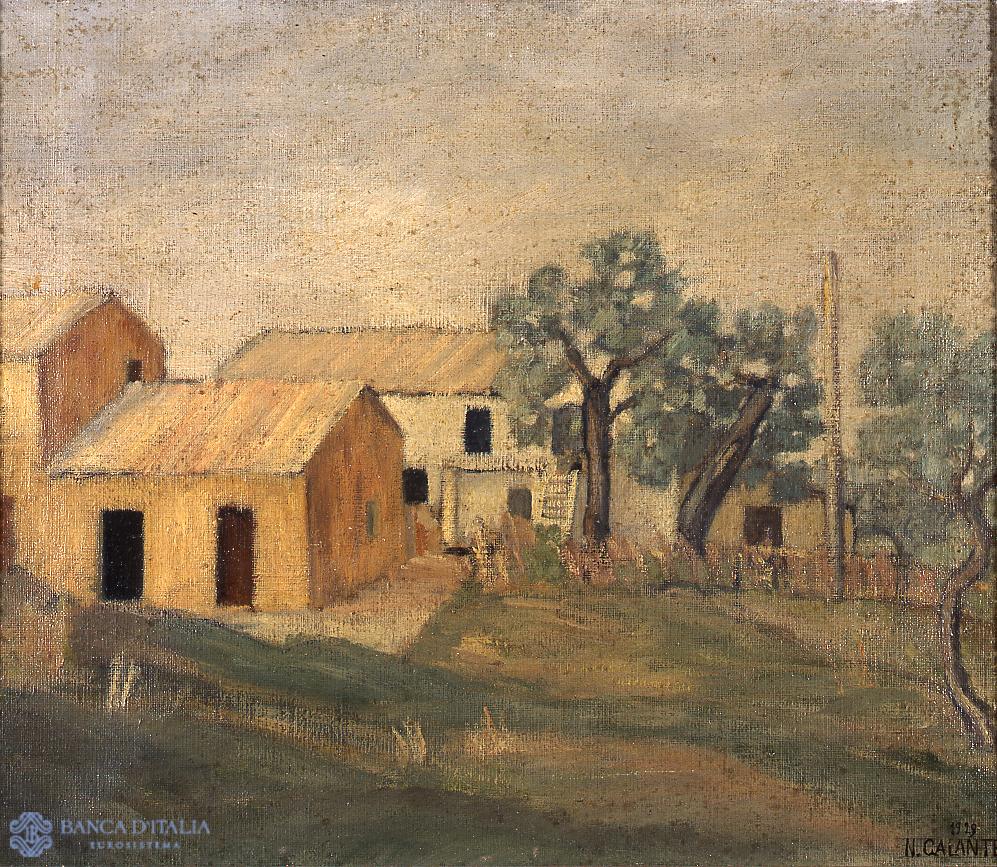
Paesaggio con case
The painting, which is signed and dated, was done shortly after the establishment of the Gruppo dei sei, reputed to be at the forefront of the new Anti-novecento movement of the 1920s.
Painting
20th century AD
Landscape
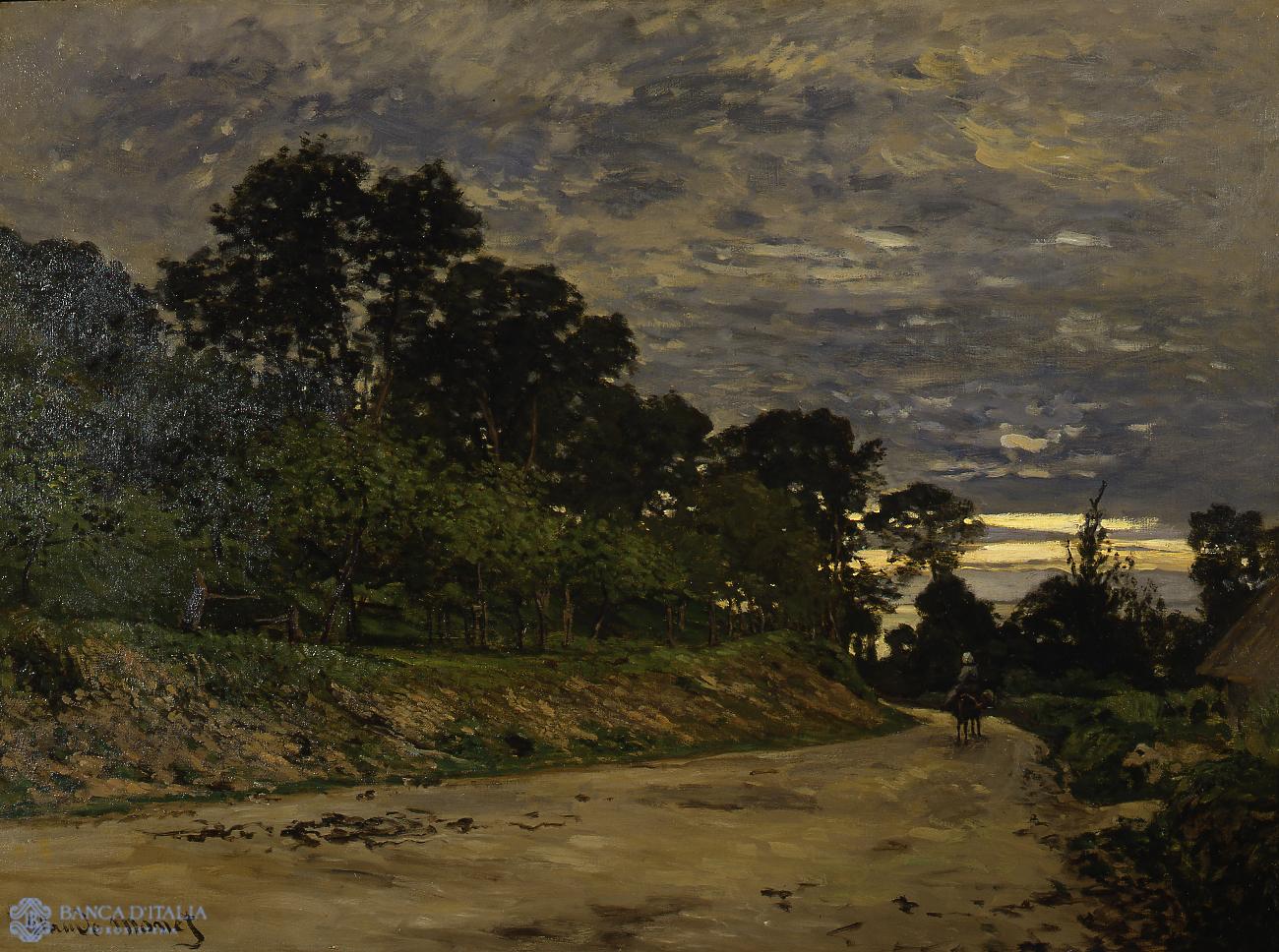
Paesaggio campestre al tramonto
Rural Landscape at Sunset is an enchanting work by the grand master of French Impressionism. The medium-size canvas rightly figures in the general catalogue of Monet’s works and its prestigious pedigree is well known; it has been in two internationally famous collections: first, the Bernheim and then the Tannhauser.
Painting
19th century AD
Landscape

Donna dormiente
The influence of the Turin school is also starkly evident in this sleeping woman by Nella Marchesini, a pupil of Felice Casorati, the master who, from his arrival in Turin in 1919 to the end of the 1930s, provided a focal point for the new generation of artists and was at the centre of innovative trends.
Painting
20th century AD
Figurative
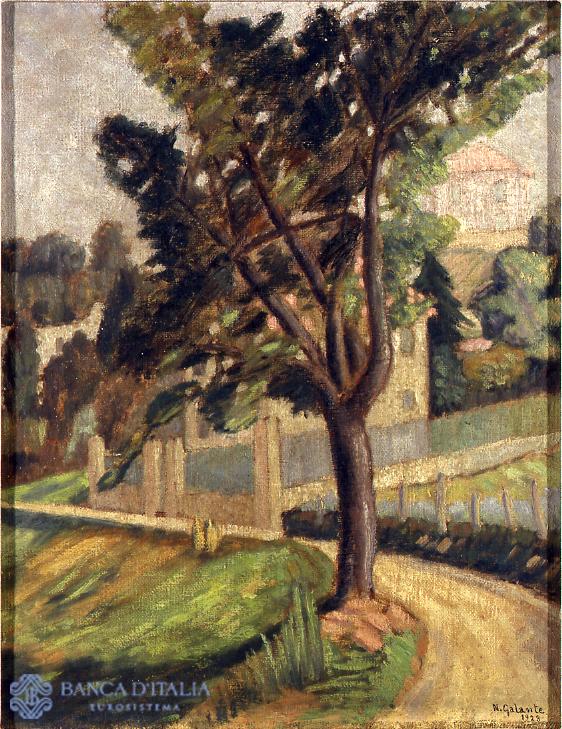
Collina di Cavoretto
The activities and objectives of the Gruppo dei sei which Lionello Venturi and Riccardo Gualino sponsored in Turin are described in the notes on Galante’s painting Paesaggio con case.
Painting
20th century AD
Landscape

Bambini che studiano
Spadini is another figure that occupies a leading position in the panorama of art which Gualino was creating. The Bank still owns two of the six paintings that formed part of the collection and they are among the best examples of Spadini’s work.
Painting
20th century AD
Figurative

L'acquaiola
The portrait is of a young peasant-woman of imposing presence depicted close-up and face-on; she is the protagonist of the scene. She holds a pitcher which she is about to fill with water. Her thick brown hair frames her face, caught by a light from the side which also illuminates part of her dress and her right arm balancing the pitcher heavy with water.
Painting
20th century AD
Figurative
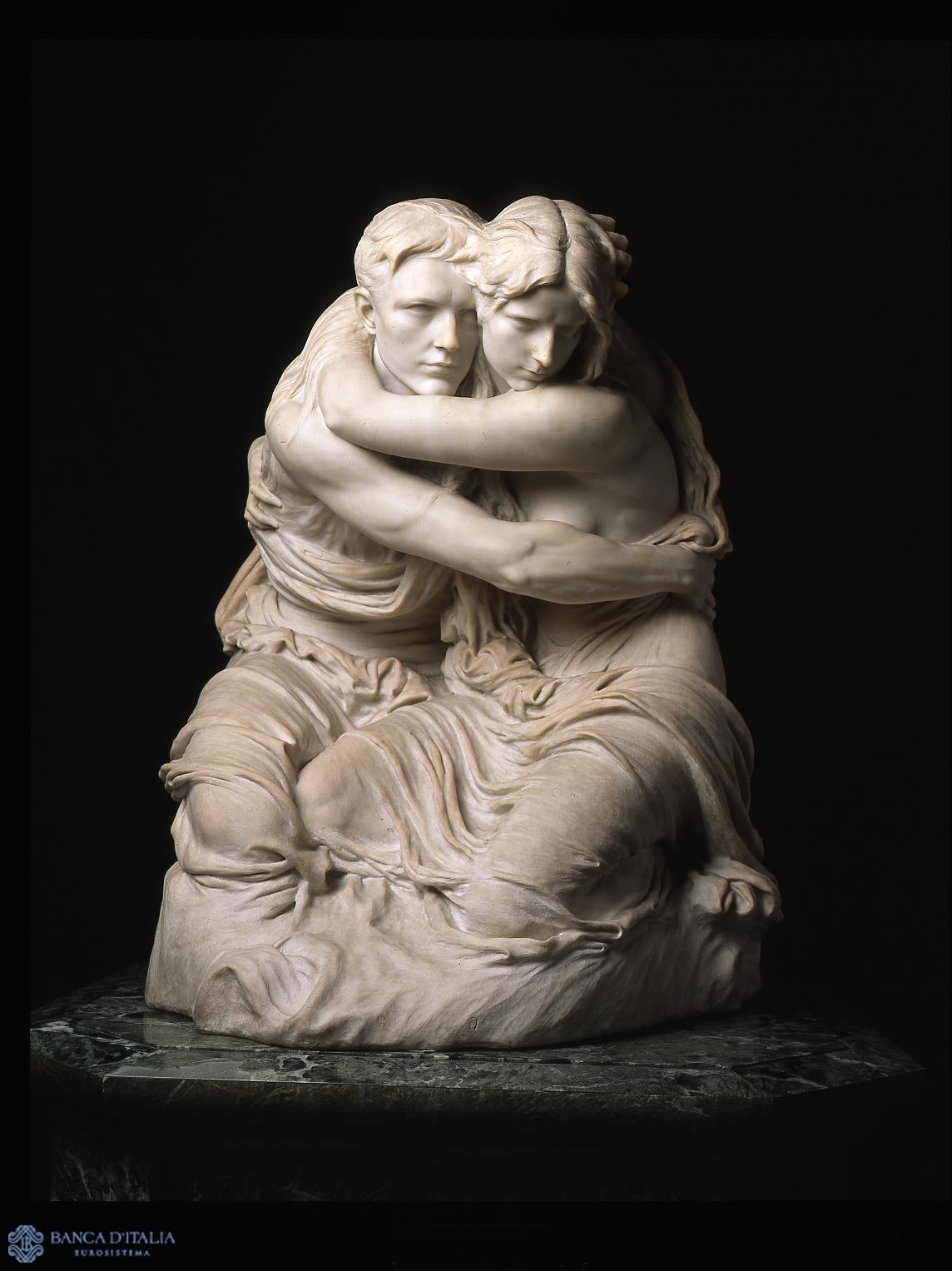
L'abisso
Canonica, who was known for his large-scale sculptures of civil and religious subjects, was greatly admired by the Turin aristocracy. The acquisition of this piece — the large marble group titled L'abisso (‘The Abyss’) —can therefore be attributed to Gualino’s ‘old-fashioned taste’, as he himself described it, before his meeting with Lionello Venturi.
Sculpture
20th century AD
Figurative
